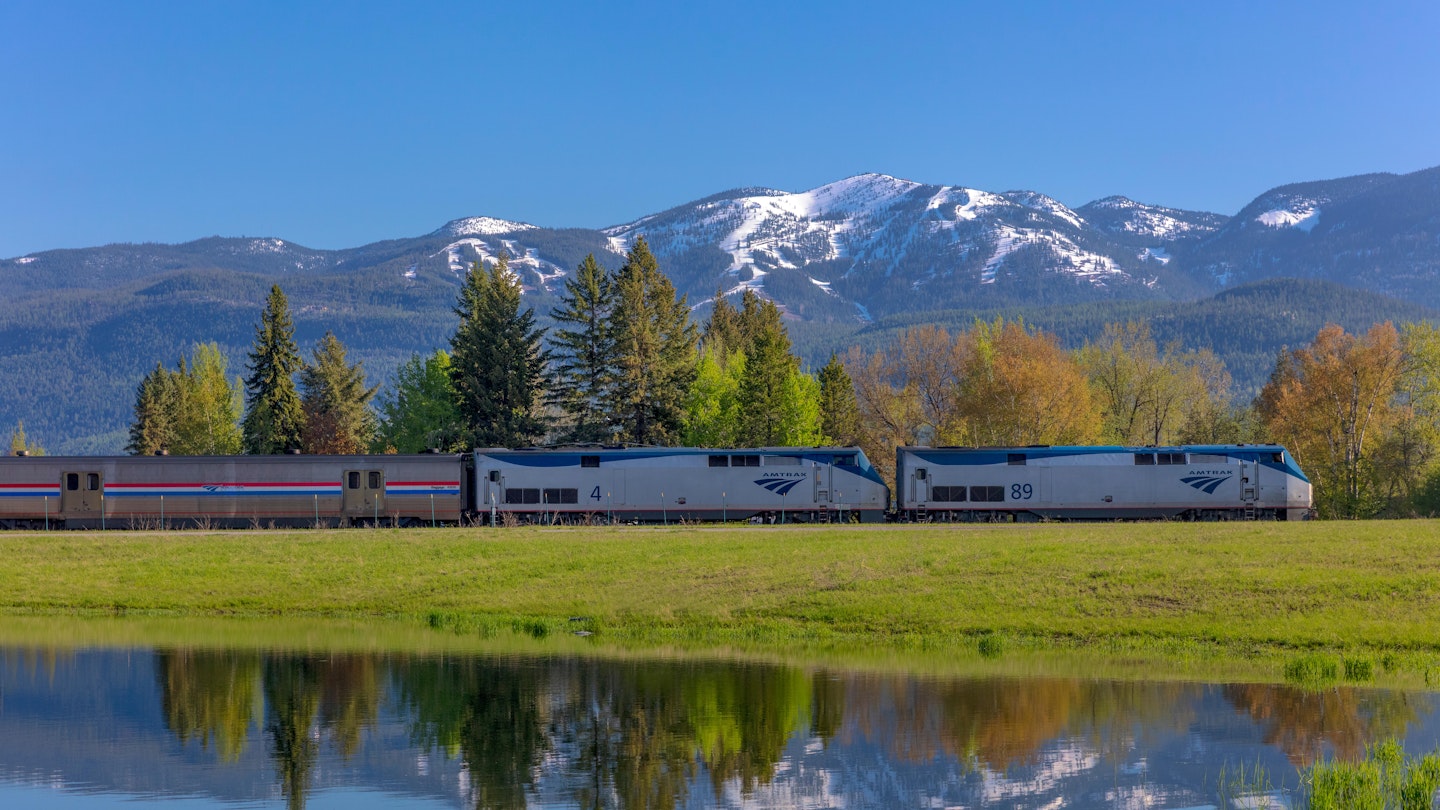Explore the Empire Builder Journey to Glacier National Park
The love affair with the motor car is a relatively recent phenomenon in the USA. One hundred years ago, wealthy tourists seeking an antidote to the stresses of city living traveled around primarily by train, thanks to a rapidly expanding rail network.
The Empire Builder train is a surviving facet of this era, running from Chicago to the West Coast (and back again). Here’s everything you need to know about one of its most iconic routes – the trip to Glacier National Park.

The Great Outdoors by Train
Stretching from the Atlantic to the Pacific, the country’s extensive cross-continental railroad system meanders through breathtaking scenery and ignited a keen interest in the “great outdoors.” One of its iconic stops is the 1489-sq-mile Glacier National Park in northwestern Montana.
Notoriously difficult to access at the time of its inception in 1910, Glacier owed much of its early acclaim to the Great Northern Railway, a pioneering line conceived and constructed by industrialist James J Hill – also known as the “Empire Builder” – in the 1890s. Hill envisioned the park’s rugged alpine scenery as a “Little Switzerland” and recognized its potential as a tourist destination, authorizing the construction of two historic train stations and several rustic hotels on its southern perimeter. Consequently, Glacier quickly attracted visitors, whose vacation dollars significantly contributed to Hill’s repayment of hefty loans during a period when many railroad companies were failing.
Despite the rise of the motor car, Amtrak continues to operate a train service (named the Empire Builder in Hill’s honor) along the Great Northern’s original 2206-mile route between Chicago and Seattle, stopping at both East Glacier Park and West Glacier stations along the way.

What is the Cost of the Empire Builder?
The 550-mile, 14.5-hour Empire Builder journey from Seattle to West Glacier costs less than $100 in a comfortable superliner seat, or around $250 for a private “roomette” that includes meals. Additionally, from Chicago (31 hours), the fares remain quite reasonable. Equipped with a restaurant car, reclining business class seats, and sleeping compartments, the Empire Builder offers a treasure trove of magnificent scenery, making it one of America’s great travel bargains.
As you traverse the landscapes of the Old West, the well-known travel adage about the journey being as important as the destination resonates deeply.

What to Expect on the Train to Glacier National Park
The trip from the west commences in Seattle at 4:40 PM with a complimentary glass of champagne, enjoyed while taking in the picturesque views of Puget Sound with the majestic outline of Mt Rainier in the distance.
By the time dinner rolls around at 7 PM, you will find yourself crossing Washington State’s Cascade Mountains via the longest rail tunnel in the United States, which spans almost 8 miles. Following dinner, as your bunk is prepared, you will enter Idaho amid the stunning Rockies. The panoramic observation car opens just in time for you to witness the sunrise over the rugged peaks of western Montana while enjoying a hearty breakfast.
Located at the park’s western entrance, the historic West Glacier station has retained its charm since the days when trainloads of city dwellers were transported to a few remote hotels and lodges via horse.

How to Get Around Glacier National Park
By the 1930s, horses were replaced by cars with the completion of the aptly named Going-to-the-Sun Road, an exhilarating drive that climbs past cascading waterfalls and steep cliffs up to the continental divide at 6646ft-high Logan Pass.
However, increasing traffic on the Going-to-the-Sun Road led to significant maintenance challenges by the 2000s. With the highway recognized as a national historic landmark, road-widening was impossible. Instead, summer 2007 saw Glacier park officials introduce a shuttle service linking Apgar in the west and St. Mary in the east, covering 50 miles. This highly efficient system connects various campgrounds, trailheads, lodges, and viewpoints, making it easy for visitors to explore the park.
If you arrive by train during the summer season and plan to stay in a hotel in West Glacier, a car rental is no longer a necessity. Keep in mind that space on the shuttles is limited, so rides should be arranged in advance.
Shuttle stops include the rustic Lake McDonald Lodge, established in 1913; the park’s three main visitor centers; and numerous trailheads designed to satisfy the needs of the most adventurous hikers.
Above all, the park and its shuttle services provide access to hundreds of square miles of pristine wilderness, teeming with wildlife such as grizzly bears and bighorn sheep, all set against dramatic Gothic mountains. This largely unchanged landscape continues to evoke the essence of the days when Blackfeet Native Americans roamed Glacier’s forested slopes, remaining remote yet comfortably accessible, in part, thanks to James J Hill and his empire-building railway.
Article first published in April 2012, and last updated in November 2020.
This article was first published Aug 15, 2019, and updated Nov 23, 2020.





